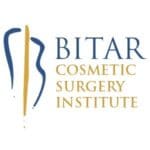
More Dental Health Articles
Oral Appliance Therapy and Dental Treatment Impact One Another
Most dental intervention for treatments of obstructive sleep apnea (OSA) and related breathing disorders are through oral appliances (OA) that move the lower jaw to a more forward and opened position and are worn during sleep.
Prevention and management of “unwanted” side effects of wearing oral appliances is an integral part of oral appliance therapy (OAT), which applies to the selection and custom creation of each OA to best prevent OSA and maintain both dental and medical health over the patient's course of care, possibly the rest of their life.
As dentists treating OSA, we are accountable to our patients. Time is taken to discuss these potential side effects before beginning OAT and obtaining informed consent that includes the need for regular dental and medical follow-up visits to monitor changes, rate of changes, and interventions recommended and/or implemented.
Many patients seeking OAT have dental conditions that are best addressed before beginning treatment, as it affects the overall dental health of the patient and the fit of the OA. It is best that esthetic, comfort, and functional concerns are discussed before and in conjunction with OAT to best serve each patient and prevent or minimize any “surprises.”
There are many variations in oral appliances, including
how they fit on or anchor to the teeth
how they move the jaw (back and forth, up and down, side-to-side)
what material are they made of (soft, hard, medium, combination)
how the material can be modified to a dental change
how their fit can be modified
how your jaw position is modified
if the OA can be repaired or modified
how they impact tongue space
how likely they are to move individual teeth
Most appliances act as orthodontic retainers, so tooth/teeth repair or replacement priorities and methods can be different for patients in OAT. For sure, appliances that had been worn during sleep for clenching and grinding one's teeth or as orthodontic retainers are replaced by the OA for treating OSA. Needed (this can be different in OAT patients) crowns or bridges are best tailored in their shape to better support the fit of the particular OA being utilized for treatment.
In short, the dental condition impacts the selection, fitting, and customization of the OA, which impacts the approach, methods, and specifics of dental interventions.
Other Articles You May Find of Interest...
- Let’s Smile Dental’s 7&Up Club
- Strengthening Smiles: Understanding the Importance of Splinting Periodontally Involved Teeth
- Understanding Soft Tissue Grafting: A Key To Periodontal Health
- New Solutions for Dentures and Dental Implants
- Benefits Of Immediate Dental Implants
- Preventing Tooth Injuries During Your Child’s Active Summer
- How New Tech In the Dental Office Benefits You

















